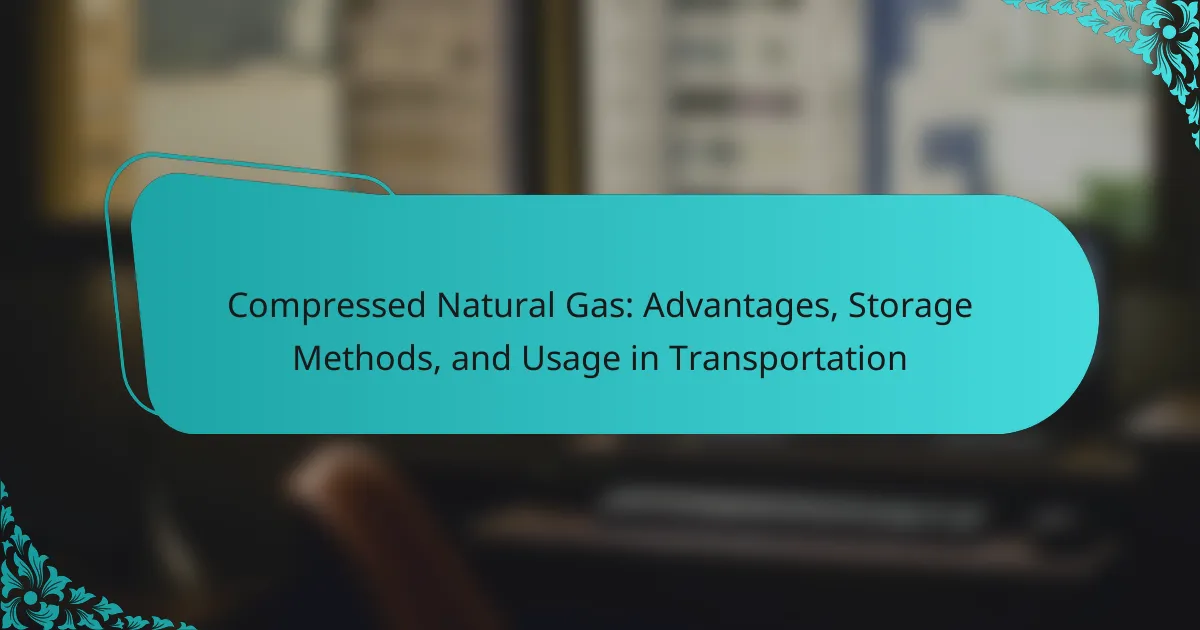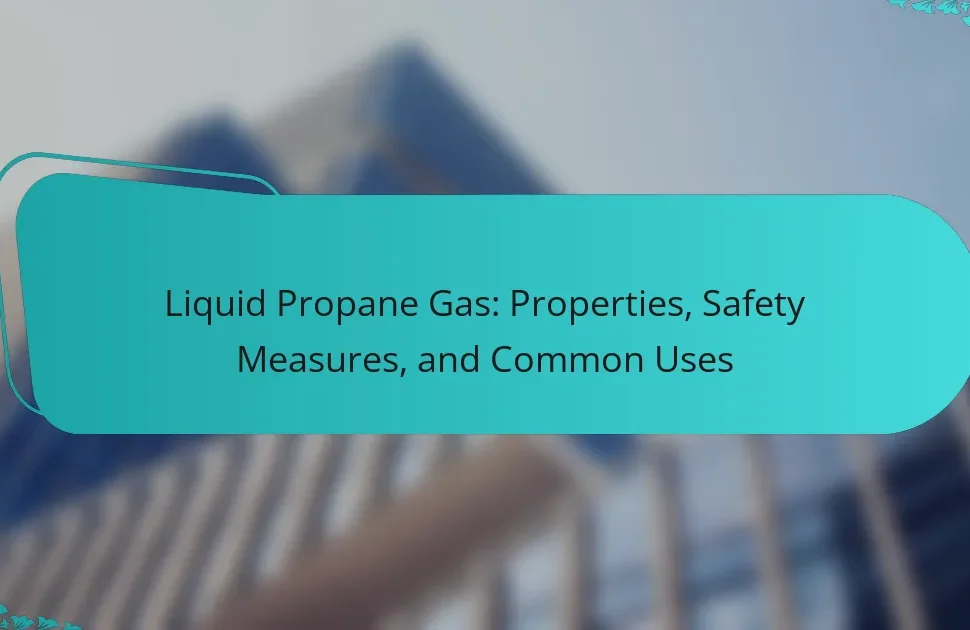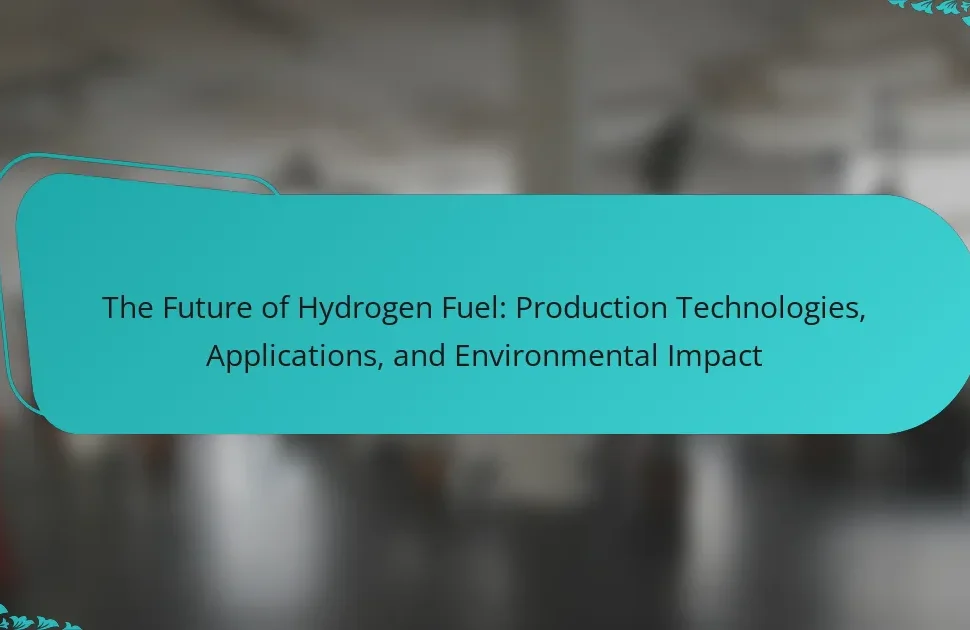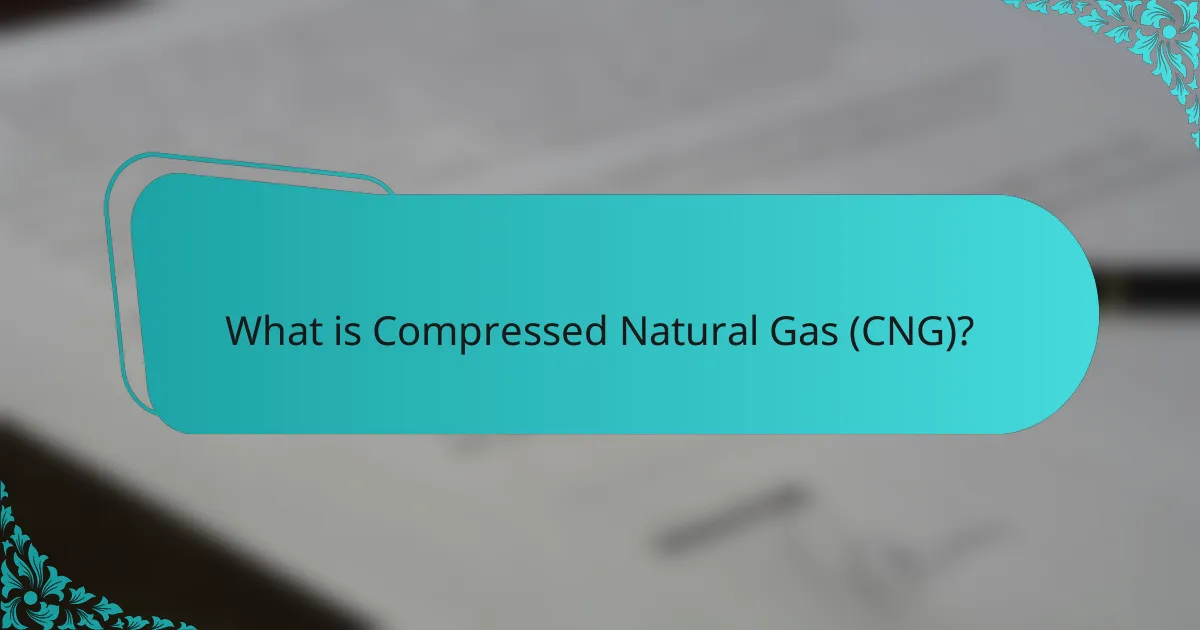
What is Compressed Natural Gas (CNG)?
Compressed Natural Gas (CNG) is a form of natural gas that has been compressed to less than 1% of its volume at standard atmospheric pressure. CNG primarily consists of methane, a clean-burning fossil fuel. It is stored in high-pressure containers, making it suitable for use as an alternative fuel for vehicles. CNG is favored for its lower emissions compared to gasoline and diesel. According to the U.S. Department of Energy, using CNG can reduce greenhouse gas emissions by up to 30%. The adoption of CNG in transportation is increasing due to its cost-effectiveness and environmental benefits.
How is Compressed Natural Gas produced?
Compressed Natural Gas (CNG) is produced by compressing natural gas to less than 1% of its volume at standard atmospheric pressure. The process begins with extracting natural gas from underground reservoirs. This gas primarily consists of methane, along with small amounts of other hydrocarbons and impurities. After extraction, the gas undergoes purification to remove water, carbon dioxide, and other contaminants. Once purified, the natural gas is compressed using high-pressure compressors. This compression enables the gas to be stored in high-pressure cylinders for transportation and use. CNG is commonly used as a cleaner alternative to gasoline and diesel in vehicles, contributing to reduced emissions.
What processes are involved in the production of CNG?
The production of Compressed Natural Gas (CNG) involves several key processes. First, natural gas is extracted from underground reservoirs through drilling. This gas primarily consists of methane, along with some other hydrocarbons. Next, the extracted gas undergoes processing to remove impurities such as water, carbon dioxide, and sulfur compounds. This is typically done using separation techniques like amine gas treating or molecular sieves.
After purification, the natural gas is compressed to high pressures, usually between 3,000 to 3,600 psi, to convert it into CNG. This compression is achieved using specialized compressors. Finally, the compressed gas is stored in high-pressure cylinders for distribution and use in vehicles. These processes ensure that CNG is safe and efficient for transportation applications.
What are the environmental impacts of CNG production?
CNG production has several environmental impacts. It contributes to greenhouse gas emissions during extraction and processing. The process of hydraulic fracturing, often used for natural gas extraction, can lead to water contamination. Additionally, methane, a potent greenhouse gas, can escape during production and transportation. This leakage can significantly undermine the climate benefits of using CNG over other fossil fuels. The energy-intensive nature of natural gas extraction also requires substantial water and land use. Thus, while CNG may emit less carbon dioxide when burned, its overall environmental footprint includes various negative impacts.
What are the primary characteristics of Compressed Natural Gas?
Compressed Natural Gas (CNG) is primarily characterized by its composition, storage method, and environmental impact. CNG consists mainly of methane, which is a clean-burning fossil fuel. It is stored at high pressure, typically around 3,000 to 3,600 psi, in specialized tanks. This high-pressure storage allows for efficient transport and use in vehicles.
CNG is less polluting than traditional gasoline or diesel, producing lower emissions of carbon dioxide, nitrogen oxides, and particulate matter. The use of CNG can significantly reduce greenhouse gas emissions. Additionally, CNG is often more cost-effective than gasoline, providing economic benefits for consumers.
The energy content of CNG is about 130,000 BTU per gallon equivalent, making it a viable alternative fuel. Lastly, CNG is non-toxic and poses a lower risk of spills compared to liquid fuels, enhancing safety in transportation and storage.
How does the composition of CNG differ from other fuels?
Compressed Natural Gas (CNG) primarily consists of methane (CH4), making it chemically distinct from other fuels. In contrast, gasoline and diesel contain a mixture of hydrocarbons with more complex structures. CNG’s high methane content results in lower carbon emissions compared to these liquid fuels. Additionally, CNG is odorless and non-toxic, while gasoline and diesel have added chemicals for smell and safety. The combustion of CNG produces fewer pollutants, such as nitrogen oxides and particulate matter. This difference in composition contributes to CNG’s reputation as a cleaner alternative for transportation.
What are the physical properties of CNG?
Compressed Natural Gas (CNG) is primarily composed of methane, a colorless and odorless gas. It has a lower density compared to liquid fuels, making it lighter than air. CNG is non-corrosive and does not produce harmful emissions when burned. The specific gravity of CNG is approximately 0.6, indicating it is less dense than air. Its energy content is about 35 MJ/m³ at standard conditions. CNG is stored at high pressures, typically around 200-250 bar. This high-pressure storage allows for efficient transportation and usage in vehicles. The boiling point of methane, the main component of CNG, is around -162°C. These properties make CNG a viable alternative fuel for transportation.

What are the advantages of using Compressed Natural Gas?
Compressed Natural Gas (CNG) offers several advantages. It is a cleaner alternative to gasoline and diesel, producing fewer emissions. Specifically, CNG reduces nitrogen oxides by 90% and carbon dioxide by 30% compared to traditional fuels.
Additionally, CNG is more cost-effective, often priced lower than gasoline. The U.S. Department of Energy reports that the average cost of CNG is significantly less per gasoline gallon equivalent.
CNG also enhances energy security by utilizing domestic resources. This reduces dependence on foreign oil, contributing to energy independence.
Furthermore, CNG vehicles typically have lower maintenance costs. The cleaner combustion process leads to less engine wear and tear.
Overall, the use of CNG supports environmental sustainability, economic savings, and energy security.
How does CNG contribute to environmental sustainability?
CNG contributes to environmental sustainability by reducing greenhouse gas emissions compared to traditional fuels. It produces up to 30% less carbon dioxide when burned. Additionally, CNG emits significantly lower levels of nitrogen oxides and particulate matter. This reduction in harmful pollutants leads to improved air quality. According to the U.S. Department of Energy, using CNG can decrease smog-forming emissions. Furthermore, CNG is often sourced from renewable processes, enhancing its sustainability profile. The shift to CNG in transportation supports global efforts to combat climate change.
What are the emissions reductions associated with CNG?
Compressed Natural Gas (CNG) significantly reduces emissions compared to traditional fuels. CNG produces approximately 25% less carbon dioxide than gasoline. It also emits lower levels of nitrogen oxides, particulate matter, and volatile organic compounds. Studies show that switching to CNG can lead to a reduction of up to 90% in particulate matter emissions. Additionally, CNG combustion results in negligible sulfur dioxide emissions. These reductions contribute to improved air quality and lower greenhouse gas emissions. The U.S. Department of Energy confirms these benefits in their reports on alternative fuels.
How does CNG compare to traditional fossil fuels in terms of pollution?
CNG produces significantly lower pollution levels compared to traditional fossil fuels. It emits approximately 30% less carbon dioxide when burned. Additionally, CNG generates fewer nitrogen oxides and particulate matter. Traditional fossil fuels, such as gasoline and diesel, release higher amounts of harmful emissions. According to the U.S. Department of Energy, CNG combustion results in up to 95% lower carbon monoxide emissions. This makes CNG a cleaner alternative for transportation. The reduced pollution levels contribute to improved air quality and lower health risks.
What economic benefits does CNG provide?
CNG provides significant economic benefits, including lower fuel costs compared to gasoline and diesel. The price of CNG is often less volatile than traditional fuels. This stability can lead to predictable budgeting for transportation companies. CNG also has a higher energy content per dollar spent, improving operational efficiency. Additionally, using CNG can result in lower maintenance costs for vehicles due to cleaner combustion. The reduced emissions associated with CNG can lead to savings in compliance with environmental regulations. Furthermore, CNG infrastructure development creates job opportunities in construction and maintenance. Overall, these factors contribute to a more sustainable and cost-effective transportation sector.
How does CNG pricing affect the transportation industry?
CNG pricing significantly impacts the transportation industry by influencing operational costs. When CNG prices are low, transportation companies can reduce fuel expenses, leading to increased profit margins. Conversely, high CNG prices can raise operational costs, prompting companies to seek alternative fuels or reduce vehicle usage.
In 2021, the average price of CNG in the United States was approximately $2.00 per gasoline gallon equivalent (GGE). This pricing allowed fleet operators to save around 30% compared to gasoline. Additionally, fluctuating CNG prices can affect vehicle purchase decisions, as companies may opt for CNG vehicles when prices are favorable.
Overall, CNG pricing directly correlates with the financial viability and operational strategies of transportation firms.
What cost savings can businesses expect from using CNG?
Businesses can expect significant cost savings from using compressed natural gas (CNG). CNG typically costs less than gasoline or diesel, leading to lower fuel expenses. According to the U.S. Department of Energy, CNG can be 30-40% cheaper than traditional fuels. Additionally, CNG vehicles often have lower maintenance costs due to cleaner combustion and reduced engine wear.
The U.S. Environmental Protection Agency notes that CNG produces fewer emissions, which can result in reduced regulatory costs. Furthermore, businesses may benefit from tax incentives and rebates for adopting CNG technologies. Overall, these factors contribute to substantial long-term savings for companies that switch to CNG.
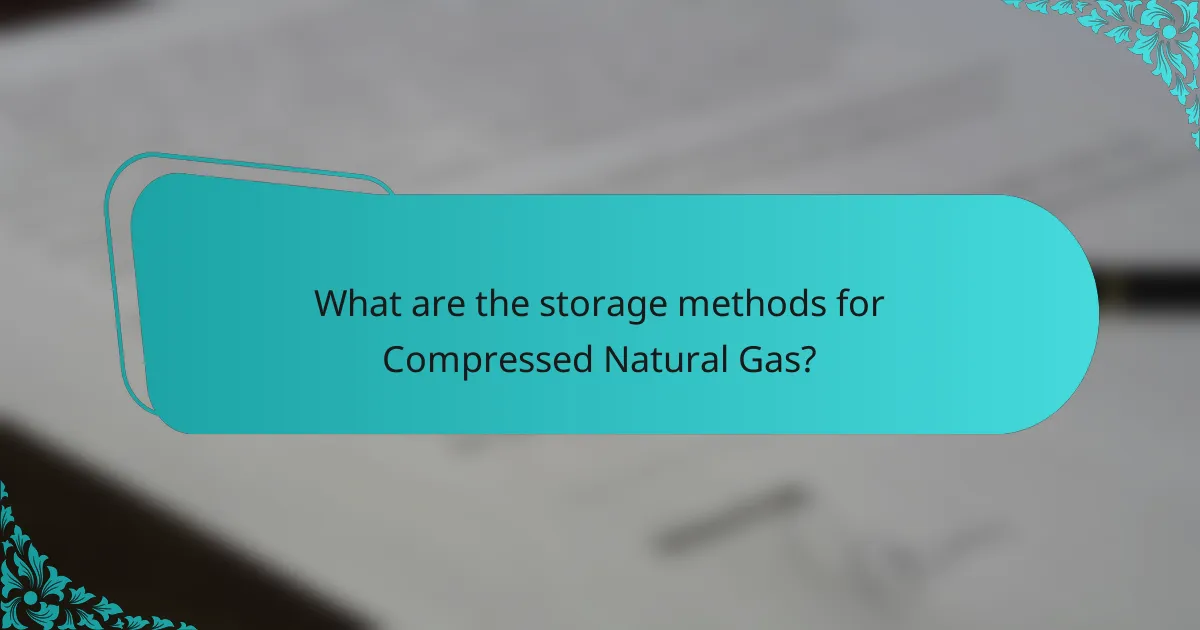
What are the storage methods for Compressed Natural Gas?
Compressed Natural Gas (CNG) is stored primarily in high-pressure cylinders. These cylinders are designed to hold gas at pressures typically between 3,000 and 3,600 psi. CNG can also be stored in tubes or spheres for larger-scale applications.
Another method is the use of virtual pipelines, where CNG is transported in specially designed containers. These containers can be moved by truck or ship to areas without pipeline access.
CNG storage is crucial for ensuring a steady supply for vehicles and industrial use. The safety standards for these storage methods are regulated to minimize risks.
How is CNG stored for transportation and distribution?
CNG is stored for transportation and distribution in high-pressure cylinders. These cylinders are typically made of steel or composite materials. They are designed to withstand pressures of around 3,000 to 3,600 psi. The storage process involves compressing natural gas to less than 1% of its volume at standard atmospheric pressure. This compression allows for efficient storage and transportation. CNG is then transported in specialized vehicles equipped with these high-pressure cylinders. The use of CNG in vehicles reduces emissions compared to traditional fuels. According to the U.S. Department of Energy, CNG can significantly lower greenhouse gas emissions.
What types of storage tanks are used for CNG?
The types of storage tanks used for CNG are high-pressure cylinders and composite tanks. High-pressure cylinders are typically made of steel or aluminum. They are designed to withstand pressures up to 3,600 psi. Composite tanks are made from materials like carbon fiber and are lighter than steel tanks. These tanks can also handle similar pressure levels. Both types are used in vehicles and refueling stations for safe storage of compressed natural gas.
What safety measures are in place for CNG storage?
Safety measures for CNG storage include pressure relief valves, proper ventilation, and regular inspections. Pressure relief valves prevent excessive pressure buildup in storage tanks. Proper ventilation reduces the risk of gas accumulation in enclosed spaces. Regular inspections ensure that storage facilities comply with safety regulations. Additionally, storage tanks are designed to withstand high pressures and are often made of robust materials. Training for personnel handling CNG is also crucial for safety. These measures collectively minimize the risk of accidents and enhance the safety of CNG storage.
What are the challenges associated with CNG storage?
CNG storage presents several challenges. One significant challenge is high-pressure requirements. CNG must be stored at pressures exceeding 3,000 psi. This necessitates robust storage tanks. Such tanks can be costly to manufacture and maintain.
Another challenge is safety concerns. High-pressure gas poses risks of leaks and explosions. Proper safety measures and regular inspections are essential.
Temperature fluctuations also affect CNG storage. Changes in temperature can alter pressure levels. This requires careful monitoring to ensure safety and efficiency.
Additionally, CNG storage systems require significant space. The size of storage tanks can limit installation options. This can be problematic in urban areas with space constraints.
Lastly, the infrastructure for CNG storage is still developing. Limited availability of refueling stations can hinder widespread adoption. This creates logistical challenges for users reliant on CNG.
How do temperature and pressure affect CNG storage?
Temperature and pressure significantly influence the storage of compressed natural gas (CNG). Increased pressure enhances the gas density, allowing more CNG to be stored in a given volume. Conversely, higher temperatures can lead to increased pressure within storage tanks. This can pose safety risks if tanks are not designed to handle the resulting pressure.
For example, the ideal gas law states that pressure is directly proportional to temperature in a closed system. Therefore, as temperature rises, the pressure in CNG storage systems also increases. Storage tanks must be constructed to accommodate these variations to ensure safe and efficient storage.
According to the American Society of Mechanical Engineers, CNG storage systems should be designed with safety margins to handle temperature fluctuations. This ensures that the integrity of the storage system is maintained under varying temperature and pressure conditions.
What advancements are being made in CNG storage technology?
Advancements in CNG storage technology include the development of composite pressure vessels. These vessels utilize lightweight materials, enhancing storage efficiency. Improved designs allow for higher pressure ratings, increasing storage capacity. Innovations in safety features have also been implemented, reducing risk during transport. Research indicates that advanced materials can withstand extreme temperatures and pressures. Additionally, new manufacturing techniques are lowering production costs. These advancements are vital for expanding CNG use in transportation. Enhanced storage solutions contribute to the overall efficiency and safety of CNG systems.
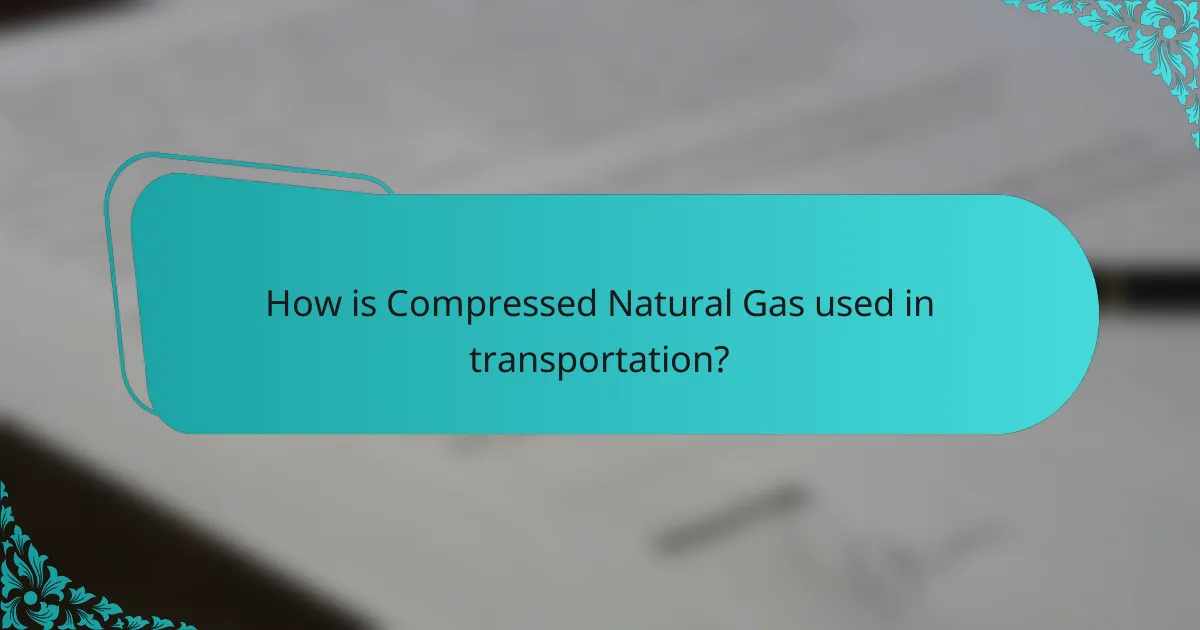
How is Compressed Natural Gas used in transportation?
Compressed Natural Gas (CNG) is used in transportation primarily as a fuel for vehicles. CNG powers cars, buses, and trucks equipped with specially designed engines. These vehicles utilize CNG due to its lower emissions compared to gasoline or diesel. CNG combustion produces fewer pollutants, contributing to better air quality. Additionally, CNG is often cheaper than traditional fuels, providing economic benefits. The use of CNG in transportation has increased significantly in recent years. According to the U.S. Department of Energy, CNG vehicles can reduce greenhouse gas emissions by up to 30%. This makes CNG a more environmentally friendly option for transportation.
What types of vehicles utilize Compressed Natural Gas?
Vehicles that utilize Compressed Natural Gas (CNG) include buses, trucks, and passenger cars. CNG is commonly used in public transportation buses for its lower emissions. Many heavy-duty trucks are also designed to run on CNG, reducing their environmental impact. Additionally, several manufacturers produce CNG-compatible passenger vehicles. These vehicles often feature modifications to their fuel systems to accommodate CNG. The adoption of CNG vehicles is growing due to increasing fuel efficiency and government incentives. The U.S. Department of Energy reports that CNG vehicles can significantly lower greenhouse gas emissions compared to gasoline or diesel vehicles.
How do CNG vehicles differ from conventional vehicles?
CNG vehicles differ from conventional vehicles primarily in their fuel type. CNG vehicles use compressed natural gas as fuel, while conventional vehicles typically use gasoline or diesel. This difference in fuel type leads to distinct emissions profiles. CNG vehicles produce lower greenhouse gas emissions compared to conventional vehicles. For instance, CNG vehicles emit up to 30% less carbon dioxide. Additionally, CNG is often less expensive than gasoline or diesel, providing cost benefits. CNG vehicles also have different storage requirements, needing high-pressure tanks. These tanks are usually made from composite materials to ensure safety and efficiency. Overall, the differences in fuel, emissions, costs, and storage define the distinction between CNG and conventional vehicles.
What are the benefits of CNG in public transportation?
CNG, or Compressed Natural Gas, offers significant benefits in public transportation. It reduces greenhouse gas emissions compared to diesel and gasoline. CNG emits up to 30% less carbon dioxide. Additionally, it produces lower levels of nitrogen oxides and particulate matter. This leads to improved air quality in urban areas. CNG is also more cost-effective; it typically costs less than gasoline or diesel. Furthermore, CNG vehicles often have lower maintenance costs due to cleaner combustion. The infrastructure for CNG refueling is expanding, making it more accessible. Overall, CNG enhances sustainability and efficiency in public transport systems.
What infrastructure is required for CNG vehicles?
CNG vehicles require a specific infrastructure to operate efficiently. This includes CNG refueling stations equipped with compressors and storage tanks. These stations must have high-pressure storage systems to maintain gas at the required pressure levels. Additionally, pipelines are necessary to transport CNG from processing plants to refueling stations. Maintenance facilities equipped for CNG vehicle servicing are also essential. Furthermore, safety systems must be in place to handle the unique properties of natural gas. According to the U.S. Department of Energy, there are over 1,500 CNG fueling stations in the United States, indicating a growing infrastructure to support these vehicles.
How do CNG refueling stations operate?
CNG refueling stations operate by dispensing compressed natural gas into vehicles. The process begins with the storage of CNG in high-pressure tanks. These tanks maintain the gas at pressures typically between 3,000 to 3,600 psi. When a vehicle arrives, the operator connects the refueling nozzle to the vehicle’s receptacle.
The station’s compressor then transfers the CNG from the storage tanks to the vehicle. During this transfer, the gas is released into the vehicle’s fuel system. Safety mechanisms are in place to monitor pressure and ensure proper flow. Additionally, CNG refueling stations often include payment systems for transaction processing.
According to the U.S. Department of Energy, CNG is a cleaner alternative to gasoline and diesel, resulting in lower emissions when used in transportation.
What are the challenges in expanding CNG infrastructure?
The challenges in expanding CNG infrastructure include high initial investment costs and limited refueling stations. Establishing a comprehensive network requires significant capital for construction. Additionally, existing infrastructure may not support new CNG facilities. Regulatory hurdles can complicate development and slow progress. Public awareness and acceptance of CNG as a viable alternative fuel also pose challenges. Limited availability of natural gas supply can restrict expansion efforts. Finally, competition from other fuel sources may hinder CNG adoption. These factors collectively impact the growth of CNG infrastructure.
What best practices should be followed when using Compressed Natural Gas in transportation?
Best practices for using Compressed Natural Gas (CNG) in transportation include regular maintenance of CNG systems. This ensures optimal performance and safety. Operators should conduct routine inspections of fuel tanks and lines for leaks. Proper training for personnel handling CNG is essential to prevent accidents.
Additionally, using certified equipment designed for CNG is crucial. This equipment meets safety standards and enhances reliability. Implementing safety protocols, such as emergency shut-off procedures, is also important.
Moreover, operators should monitor fuel quality and pressure regularly. This helps maintain engine efficiency and reduces emissions. Following these practices can lead to safer and more efficient CNG transportation.
How can fleet operators maximize the benefits of CNG?
Fleet operators can maximize the benefits of CNG by optimizing vehicle performance and infrastructure. This includes selecting CNG-compatible vehicles that are efficient and reliable. Regular maintenance of these vehicles ensures they operate at peak efficiency. Investing in CNG refueling infrastructure reduces downtime and increases accessibility. Training drivers on efficient driving techniques can lower fuel consumption. Monitoring fuel usage through telematics helps identify areas for improvement. Utilizing government incentives for CNG adoption can enhance cost savings. According to the U.S. Department of Energy, CNG can reduce greenhouse gas emissions by up to 30% compared to gasoline.
What maintenance practices are recommended for CNG vehicles?
Regular maintenance practices for CNG vehicles include checking the fuel system for leaks. Inspecting the high-pressure gas lines is essential. Ensuring the integrity of the CNG tanks is crucial for safety. Routine inspections of the pressure relief devices are recommended. Monitoring the engine and exhaust systems helps maintain performance. Performing regular oil changes and filter replacements is necessary. Checking the condition of spark plugs ensures efficient combustion. Following manufacturer guidelines for maintenance schedules is vital for longevity.
Compressed Natural Gas (CNG) is a clean-burning alternative fuel primarily composed of methane, stored at high pressures for use in transportation. This article outlines the production processes of CNG, its environmental impacts, and its advantages over traditional fossil fuels, including lower emissions and cost-effectiveness. Additionally, it examines the infrastructure required for CNG vehicles, storage methods, and best practices for maximizing benefits in transportation. Key challenges in expanding CNG infrastructure and maintenance practices for CNG vehicles are also addressed, providing a comprehensive overview of CNG’s role in sustainable transportation solutions.
